For “Foodie Friday”:
11 Food Ingredients Banned Outside the U.S. That We Eat
 “Buzzfeed published a list of 8 ingredients banned outside the U.S. that are found in foods in America, has riled the plates of many in the food industry.
“Buzzfeed published a list of 8 ingredients banned outside the U.S. that are found in foods in America, has riled the plates of many in the food industry.
The Food and Drug Administration assures the public that despite the frenzy over the list of ingredients banned in some countries outside the U.S., it is doing its job of monitoring food safety.
Julie Jones, a professor emeritus with St. Catherine University in Minnesota and author of the textbook, Food Safety, said what drives one country to ban a food and not another often has to do with as much politics as it does science. "We have science and politics and they are different in each country," Jones said.
Here are 11 ingredients noted as banned in other countries and what some experts have to say about them:
Nutrigrain Bars
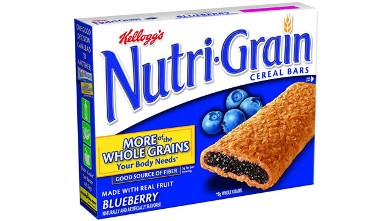
Blue #1 food coloring
Banned in Norway, Finland and France, Blue #1 and Blue #2 can be found in candy, cereal, drinks and pet food in the U.S.
Kellogg's did not reply to multiple requests for comment about its use of Blue #1 listed as an ingredient in some Nutrigrain bars.
M&Ms

Blue #2 food coloring
"Until the twentieth century, food coloring was obtained from natural sources," Jayson and Mira Calton write in "Rich Food, Poor Food." "People gathered spices, like saffron and turmeric, to add rich hues to their otherwise bland-colored foods. While this method may have been somewhat limiting in shades, at least it was safe. Today, most artificial colors are made from coal tar."
Blue #2 is listed as an ingredient in Mars' M&Ms.
Kraft Macaroni and Cheese
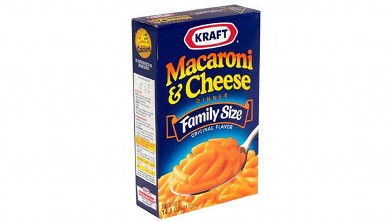
Yellow #5 (Tartazine), Yellow #6 food coloring
Yellow #5 is banned in Norway and Austria due to compounds benzidine and 4-aminobiphenyl, the Caltons say.
"Six of the eleven studies on yellow #5 showed that it caused genotoxicity, a deterioration of the cell's genetic material with potential to mutate healthy DNA," the book, "Rich Foods, Poor Foods," states.
Companies in the U.S. are required to list Yellow #5 in their ingredients because some people have sensitivity to it. "Companies are so sensitive about allergies, but peanut allergies would be far more common than Tartazine," Pariza said.
Yellow #6 is banned in Norway and Finland, the Caltons say, but Lowe said the dye is approved across the EU.
Lowe said benzidine and 4-minobiphenyl are two different names for the same compound, which is known as a human carcinogen.
(Read More: Mom to Kraft: Take Yellow Dye Out of Mac and Cheese “Leake and fellow North Carolina food blogger Vani Hari did some investigating and found that Kraft makes the same Mac & Cheese for its consumers in the United Kingdom, but because of stricter rules regarding additives, it is dye-free.)”
Kraft Catalina Dressing

Red #40
"Red #40 may contain the carcinogenic contaminant p-Cresidine and is thought to cause tumors of the immune system," according to "Rich Food, Poor Food". "In the UK, it is not recommended for children,", but it is approved for use in the EU.
The ingredient can be found in fruit cocktail, maraschino cherries, grenadine, cherry pie mix, ice cream, candy and other products.
Jones said high amounts of some ingredients could be damaging to some people, but that depends on the amount of consumption and the content of one's diet in general.”
Complete article at: http://abcnews.go.com/Lifestyle/Food/11-foods-banned-us/story?id=19457237#1
_______
10 American Foods That Are Banned in Other Countries
“What's really in your food?
Could a trip to the grocery store make you sick?
Many foods sold in the US are banned in other countries due to harmful additives, growth promoters, genetically engineered ingredients or other dangerous practices
This includes farm-raised salmon, Hawaiian (GMO) papaya, artificial food dyes, arsenic-laced chicken, ractopamine-tainted meat, bromate-containing drinks and bread, olestra, carcinogenic preservatives, and rBGH-laced milk
To avoid potentially hazardous foods and harmful ingredients permitted in the US food supply, ditching processed foods entirely is your best option.
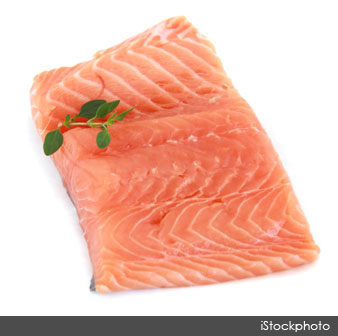 Farm-Raised Salmon
Farm-Raised Salmon
- Farmed salmon are raised on a wholly unnatural diet of grains along with a concoction of antibiotics and other drugs. This diet leaves the fish with unappetizing grayish flesh, so to compensate, they're fed synthetic astaxanthin made from petrochemicals, which has not been approved for human consumption. Farmed Salmon fed these chemicals are banned in Australia and New Zealand.
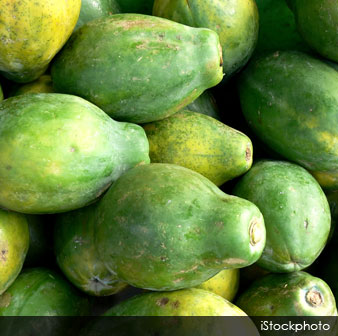 Genetically Engineered Papaya
Genetically Engineered Papaya
- Most Hawaiian papaya is now genetically engineered to be resistant to ringspot virus. Mounting research now shows that animals fed genetically engineered foods, such as corn and soy, suffer a wide range of maladies, including intestinal damage, multiple-organ damage, massive tumors, birth defects, premature death, and near complete sterility by the third generation of offspring. GE papaya is banned in the EU.
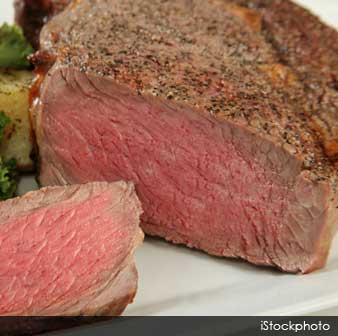
Ractopamine-Tainted Meat
The beta agonist drug ractopamine, which reduces the overall fat content of meat, is currently used in about 45 percent of US pigs, 30 percent of ration-fed cattle, and an unknown percentage of turkeys.
Up to 20 percent of ractopamine remains in the meat you buy from the supermarket.

Flame Retardant Drinks
Citrus-flavored sodas and sports drinks sold in the US typically contain a synthetic chemical called brominated vegetable oil (BVO), which was originally patented by chemical companies as a flame retardant. BVO has been shown to bioaccumulate in human tissue and breast milk, and animal studies have found it causes reproductive and behavioral problems in large doses.
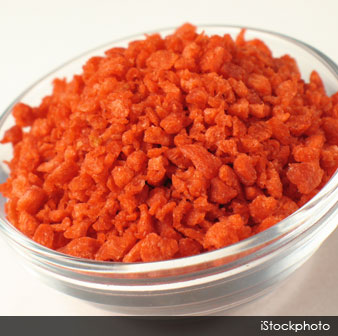
Processed Foods
Containing Artificial Food Colors and Dyes
- More than 3,000 food additives -- preservatives, flavorings, colors and other ingredients -- are added to US foods. Meanwhile, many of these are banned in other countries, based on research showing toxicity and hazardous health effects, especially with respect to adverse effects on children's behavior.
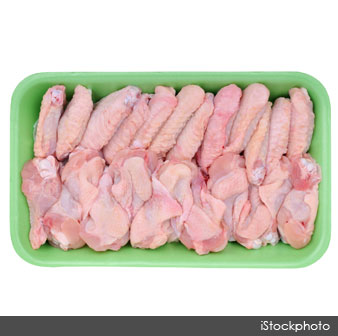
Arsenic-Laced Chicken
- Arsenic-based drugs are approved for use in animal feed in the US because they make animals grow quicker and make the meat appear pinker (i.e. "fresher"). The FDA claims these products are safe because they contain organic arsenic, which is less toxic than the other inorganic form, which is a known carcinogen. However, studies suggest the organic arsenic can transform into inorganic arsenic, which has been found in store-bought chickens sold in the US. The EU does not permit arsenic-based drugs in food animals.
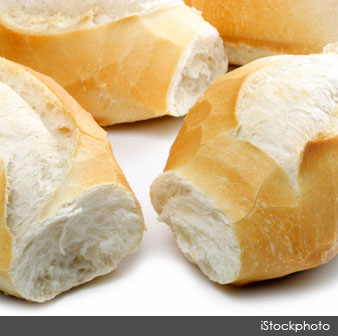
Bread with Potassium Bromate
- The use of potassium bromate as an additive to commercial breads and baked goods has been a huge contributor to bromide overload in Western cultures. Bromated flour is "enriched" with potassium bromate. Studies have linked potassium bromate to kidney and nervous system damage, thyroid problems, gastrointestinal discomfort, and cancer. Use of potassium bromate is banned in Canada, China and the EU.
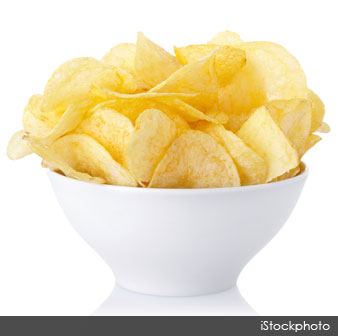
Olestra/Olean
- Olestra, aka Olean, created by Procter & Gamble, is a calorie- and cholesterol-free fat substitute used in fat-free snacks like chips and French fries. Adverse reactions include diarrhea, cramps and leaky bowels. More importantly, olestra also interferes with the absorption of fat soluble vitamins such as A, D, E and K. Olestra is banned in the UK and Canada.
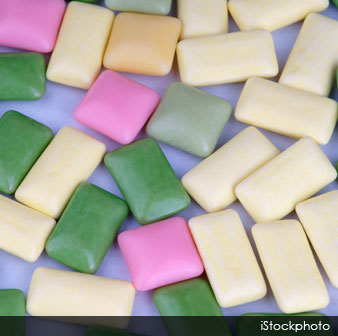
Preservatives BHA and BHT
- BHA (butylated hydroxyanisole) and BHT (butylated hydroxytoluene) are commonly used preservatives. BHA is known to cause cancer in rats, and may be a cancer-causing agent in humans as well. US experts concluded that BHA "is reasonably anticipated to be a human carcinogen." BHA and BHT are banned in Japan and parts of the European Union, and the UK does not permit BHA in baby foods.

Milk and Dairy Products Laced with rBGH
- RBGH is a synthetic version of natural bovine somatotropin (BST). It's injected into cows to increase milk production, but it is banned in at least 30 other nations because of its dangers to human health, which include an increased risk for colorectal, prostate, and breast cancer by promoting conversion of normal tissue cells into cancerous ones. The only way to avoid rBGH is to look for products labeled as "rBGH-free" or "No rBGH." RBGH is banned in Australia, New Zealand, Israel, the EU, and Canada.”
http://healthyliving.msn.com/health-wellness/10-things-americans-eat-that-are-banned-elsewhere#1
_______
“Food Babe” – A Woman on a Mission to Change the Food Industry, and How You Can Too
‘Pay the Farmer, or Pay the Hospital’
“Kraft, like many other companies, use toxic ingredients in the products made for the US market, while formulating the exact same products differently for other countries.
Vani’s achievements include making the food chain Chipotle list their ingredients, and label genetically engineered (GE) ingredients for transparency. The chain has also swapped out some GE ingredients for non-GMO alternatives.
Vani says: “I got picked up by one of the top consulting firms in the country... managing large-scale projects, mergers, acquisitions, and integration work. I was travelling Sunday through Thursday, and quickly, at the age of 22 to 23 years old, I became really sick...
It was that life-changing moment that I realized, ‘Wait a minute, I gained 25 to 30 pounds within a three-month period, and then I had appendicitis?’ There’s something seriously wrong with what I’ve been doing and what I’ve been eating. What’s in the food, and what caused my body to be so out of whack?
Everyone says appendicitis is this random occurrence... But I don’t think it’s random, because it’s definitely related to your digestive system. And I was overloading my digestive system with tons of toxins.”
“I’d been duped by the food industry,” she says. “I thought that eating a six-gram fat or less; 250-calorie or less Subway sandwich was healthy for me. I didn’t realize that the nine-grain bread had over 50 ingredients, with one ingredient that’s banned in Singapore. If you get caught using it, you get fined 450,000 dollars. I didn’t know that information. I ate those things because of the calories.
I thought, ‘Oh, look at all these vegetables inside.’ But I didn’t realize that the jalapenos have been dipped in petroleum-based dyes: Yellow #5 and Yellow #6. I didn’t realize that all of these buildups of chemicals in my body were causing these issues. And it wasn’t just appendicitis. I had asthma and allergies growing up. I was on three or four asthma medications... I had to see the doctor on a very frequent basis, even put on steroids to control my asthma. Now I have zero asthma. I’m on zero medications right now.”
“This was the beginning of a series called “Food Babe Investigates,” where she digs deeply into the products sold by major food companies, such as Starbucks, Subway, and Chipotle.
The latter resulted in another “one-woman victory” for Vani. Chipotle did not have a list of ingredients on their menus or website, and the corporate headquarters refused to supply her with one when she contacted them directly. “I said, ‘But your label says ‘Food with Integrity.’ How am I going to know that it’s food with integrity if I can’t know the ingredients and I can’t read them for myself?'” she says.”
More at: http://articles.mercola.com/sites/articles/archive/2013/07/07/van-hari-food-babe.aspx
_______
On This Day:
Massachusetts begins ill-fated Penobscot expedition, Jul 19, 1779:
“On this day in 1779, Massachusetts, without consulting either Continental political or military authorities, launches a 4,000-man naval expedition commanded by Commodore Dudley Saltonstall, Adjutant General Peleg Wadsworth, Brigadier General Solomon Lovell and Lieutenant Colonel Paul Revere. The expedition consisted of 19 warships, 24 transport ships and more than 1,000 militiamen. Their objective was to capture a 750-man British garrison at Castine on the Penobscot Peninsula, in what would later become Maine.
The expedition arrived on July 25 and proceeded to launch a series of inconclusive land attacks, leaving Patriot naval forces underutilized and allowing the British plenty of time to send for reinforcements. The land commander, Brig. Gen. Lovell, began to retreat at the arrival of Sir George Collier's seven British warships, expecting Saltonstall to engage in a naval battle. Saltonstall, however, did not fight for long: the naval engagement concluded in total disaster on August 14, when Saltonstall surprised both Patriot and British commanders by fleeing upriver and burning his own ships. The Patriots lost in excess of 470 men, as well as numerous Continental Navy and Massachusetts ships that were burned during the retreat. The British achieved their victory at a cost of only 13 men.
Saltonstall and Paul Revere later faced court martial because of the fiasco. Saltonstall lost his commission, but Revere won acquittal. By contrast, Peleg Wadsworth, who served as Revere's second-in-command, won acclaim for his performance in the engagement. He had organized the retreat, which was the only well-executed aspect of the mission. Wadsworth's family continued to play a celebrated role in American history: his grandson was the famed poet, Henry Wadsworth Longfellow. The failed Penobscot expedition was considered the worst naval disaster in American history until the surprise Japanese attack on Pearl Harbor in 1941, more than 160 years later.”
_______
Rosetta Stone found, Jul 19, 1799:
 “On this day in 1799, during Napoleon Bonaparte's Egyptian campaign, a French soldier discovers a black basalt slab inscribed with ancient writing near the town of Rosetta, about 35 miles north of Alexandria. The irregularly shaped stone contained fragments of passages written in three different scripts: Greek, Egyptian hieroglyphics and Egyptian demotic. The ancient Greek on the Rosetta Stone told archaeologists that it was inscribed by priests honoring the king of Egypt, Ptolemy V, in the second century B.C. More startlingly, the Greek passage announced that the three scripts were all of identical meaning. The artifact thus held the key to solving the riddle of hieroglyphics, a written language that had been "dead" for nearly 2,000 years.
“On this day in 1799, during Napoleon Bonaparte's Egyptian campaign, a French soldier discovers a black basalt slab inscribed with ancient writing near the town of Rosetta, about 35 miles north of Alexandria. The irregularly shaped stone contained fragments of passages written in three different scripts: Greek, Egyptian hieroglyphics and Egyptian demotic. The ancient Greek on the Rosetta Stone told archaeologists that it was inscribed by priests honoring the king of Egypt, Ptolemy V, in the second century B.C. More startlingly, the Greek passage announced that the three scripts were all of identical meaning. The artifact thus held the key to solving the riddle of hieroglyphics, a written language that had been "dead" for nearly 2,000 years.
When Napoleon, an emperor known for his enlightened view of education, art and culture, invaded Egypt in 1798, he took along a group of scholars and told them to seize all important cultural artifacts for France. Pierre Bouchard, one of Napoleon's soldiers, was aware of this order when he found the basalt stone, which was almost four feet long and two-and-a-half feet wide, at a fort near Rosetta. When the British defeated Napoleon in 1801, they took possession of the Rosetta Stone.
Several scholars, including Englishman Thomas Young made progress with the initial hieroglyphics analysis of the Rosetta Stone. French Egyptologist Jean-Francois Champollion (1790-1832), who had taught himself ancient languages, ultimately cracked the code and deciphered the hieroglyphics using his knowledge of Greek as a guide. Hieroglyphics used pictures to represent objects, sounds and groups of sounds. Once the Rosetta Stone inscriptions were translated, the language and culture of ancient Egypt was suddenly open to scientists as never before.
The Rosetta Stone has been housed at the British Museum in London since 1802, except for a brief period during World War I. At that time, museum officials moved it to a separate underground location, along with other irreplaceable items from the museum's collection, to protect it from the threat of bombs.”
_______
Yesterday:
Misty and I went to get Jay and had our walk down there. Ray had already started painting the new board fence in front of my front door.
Now that the corner post was cemented in by the contractor, Jay and I screwed the cedar skirting around the bottom of the screen porch. Blackie, Ray and Shay’s cat, can’t get under there any more. I couldn’t find Blackie, so I was worried that she had been ‘sewn in’ under the porch, but Ray said he had seen her after that.
With that done, we can start to put back the panels, window ledges and new screen wire on the walls. I think that will take a couple of mornings, weather permitting. I know Nala, my foster cat, will enjoy being out there in the mornings as soon as it is done. Early every morning when I open the doors and windows, she sits by that screen door going onto the screen porch, looking longingly.
A foster-mom friend and her grown son came by to see me in the afternoon. He played with Nala and her feather-toy-on-a-stick, but she wouldn’t go sit on his lap. He really wanted to hold her, but she wouldn’t have any of that. Of course, my treasure, old Misty, was very happy to see them, she loves everybody.
We had a nice visit yesterday.















3 comments:
It is frightening that most food sold in the U.S. contains poisons. What is more frightening is that most people either don't believe it or don't care.
I don't know why people still eat stuff that they know is not good for them. Maybe they believe that what don't kill them makes them stronger. (grin)
Thank you for your comments, DD and Gypsy.
I know of at least three very sick neighbors, who are so self satiating, that they say they are going to eat what they want to.
They don't equate their bad health, cancer, diabetes, etc, with what they are eating.
That all adds fuel to the money making food companies. People will buy it, no matter what it does to them.
Happy Tails and Trails, Penny.
Post a Comment